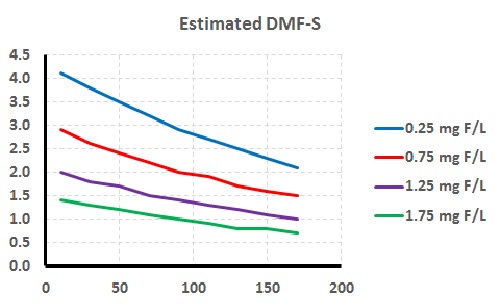Open Parachute - Dental health – it’s not all about fluoride
Fluoride is not the only factor in oral health. But it is generally the only element in drinking water considered for its effect on our teeth.
Drinking water fluoride benefits existing teeth by chemically reacting with the tooth surface. Involvement of fluoride in the apatite structure at the tooth surface helps prevent demineralisation, due to acid attack, and also encourages remineralisation – tooth enamel repair.
But fluoride is not the only chemical species in drinking water and food that promotes this reaction at the tooth surface. Calcium and phosphate must also be involved. (Bioapatites in teeth and bones are chemical compounds of calcium, phosphate and fluoride). However, these other ions have generally been neglected in studies of the effects of drinking water composition on dental health.
I recently came across a scientific paper which helps overcome this deficiency:
Bruvo, M., Ekstrand, K., Arvin, E., Spliid, H., Moe, D., Kirkeby, S., & Bardow, A. (2008). Optimal Drinking Water Composition for Caries Control in Populations. Journal of Dental Research, 87(4), 340–343.
It compared the dental health of Danish children with the most significant drinking water characteristics. Data for the decayed missing and filled tooth surfaces (DMF-S) of 15 year old schoolchildren were used. The drinking water characteristics included the concentration of a range of cations and anions, organic carbon, hardness, pH, ionic strength and residue content.
Statistical analysis identified calcium and fluoride as having the major effect and the authors used their data to produce a model relating DMF-S to both calcium and fluoride. The figure below give some idea of predictions from this model.
The model explains about 45% of the variance – better than when fluoride is considered alone (Ekstrand et al., 2003 were able to explain 35% of the variance using fluoride alone).
Community water fluoridation is not used in Denmark but the natural concentration of fluoride in the drinking waters reported in this study ranged from 0.06 – 1.61 (mean 0.33) mg F/L. The concentration of calcium ranged from 31.4 – 162.3 (mean 83.5) mg Ca/L.
So, a result that is hardly surprising for chemists familiar with the surface chemistry of apatites. But it does suggest that perhaps health authorities should consider the calcium concentration of drinking waters as well as fluoride.
According to the authors optimal drinking water should contain medium concentrations of both ions – about 90 mg Ca/L and 0.75 mg F/L. I suspect our drinking water calcium concentrations in New Zealand tend to be lower than this.
Perhaps this is something to think about. And perhaps those anti-fluoride fanatics who use distillation or reverse osmosis to remove fluoride are also forgoing the oral health benefits of calcium. A case of throwing out two babies with the bath water.
“Perhaps this is something to think about. And perhaps those anti-fluoride fanatics who use distillation or reverse osmosis to remove fluoride are also forgoing the oral health benefits of calcium”
So perhaps the Ministry of Health and Ken should stop saying concerned parents of infants can use filters.
